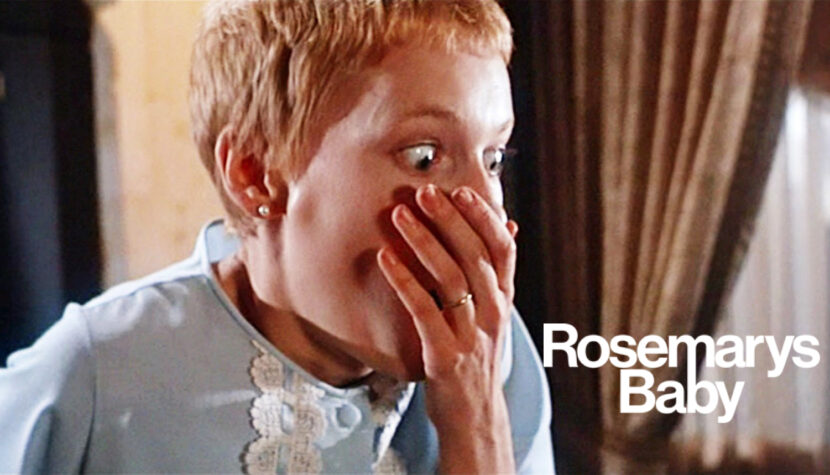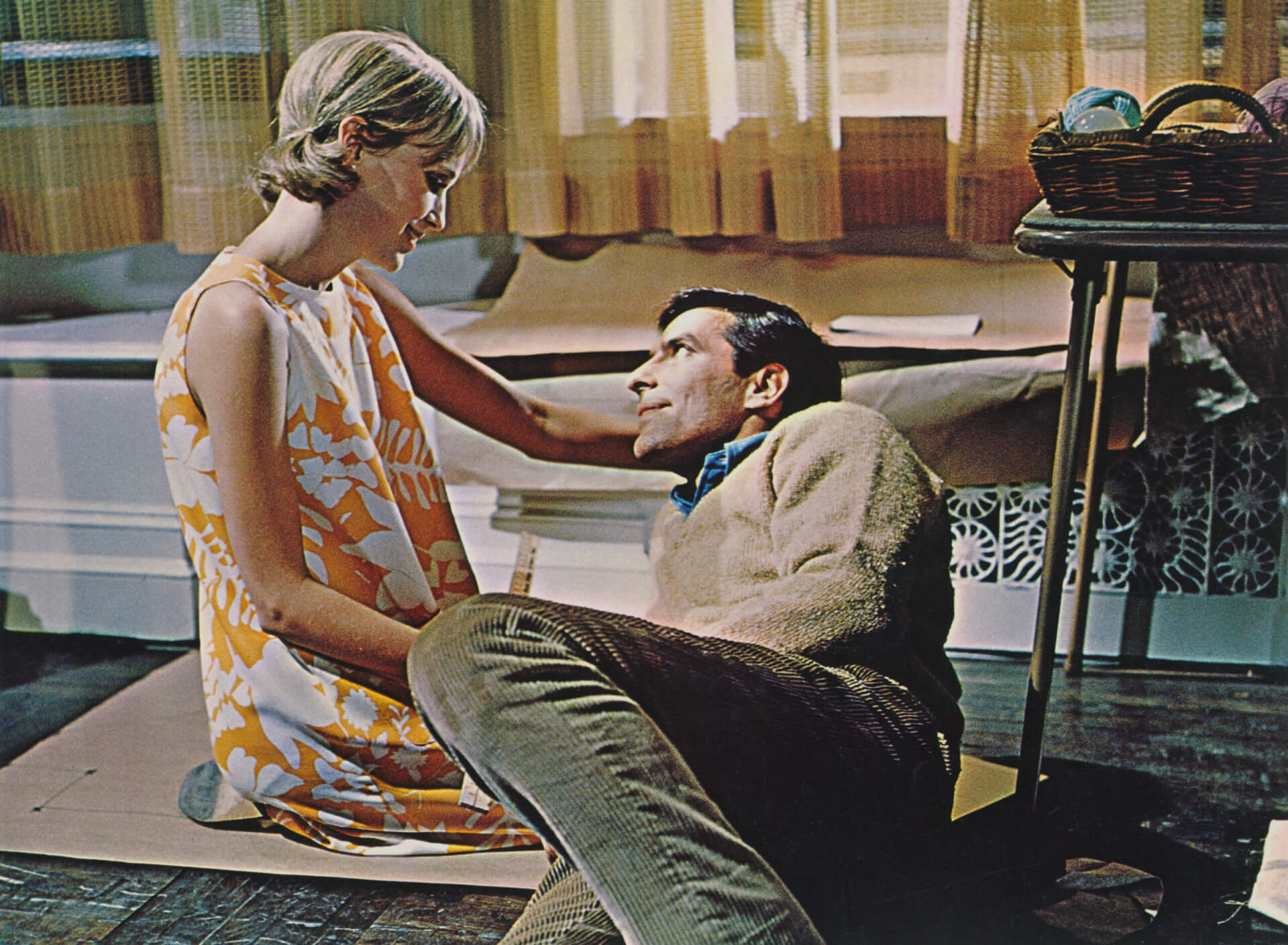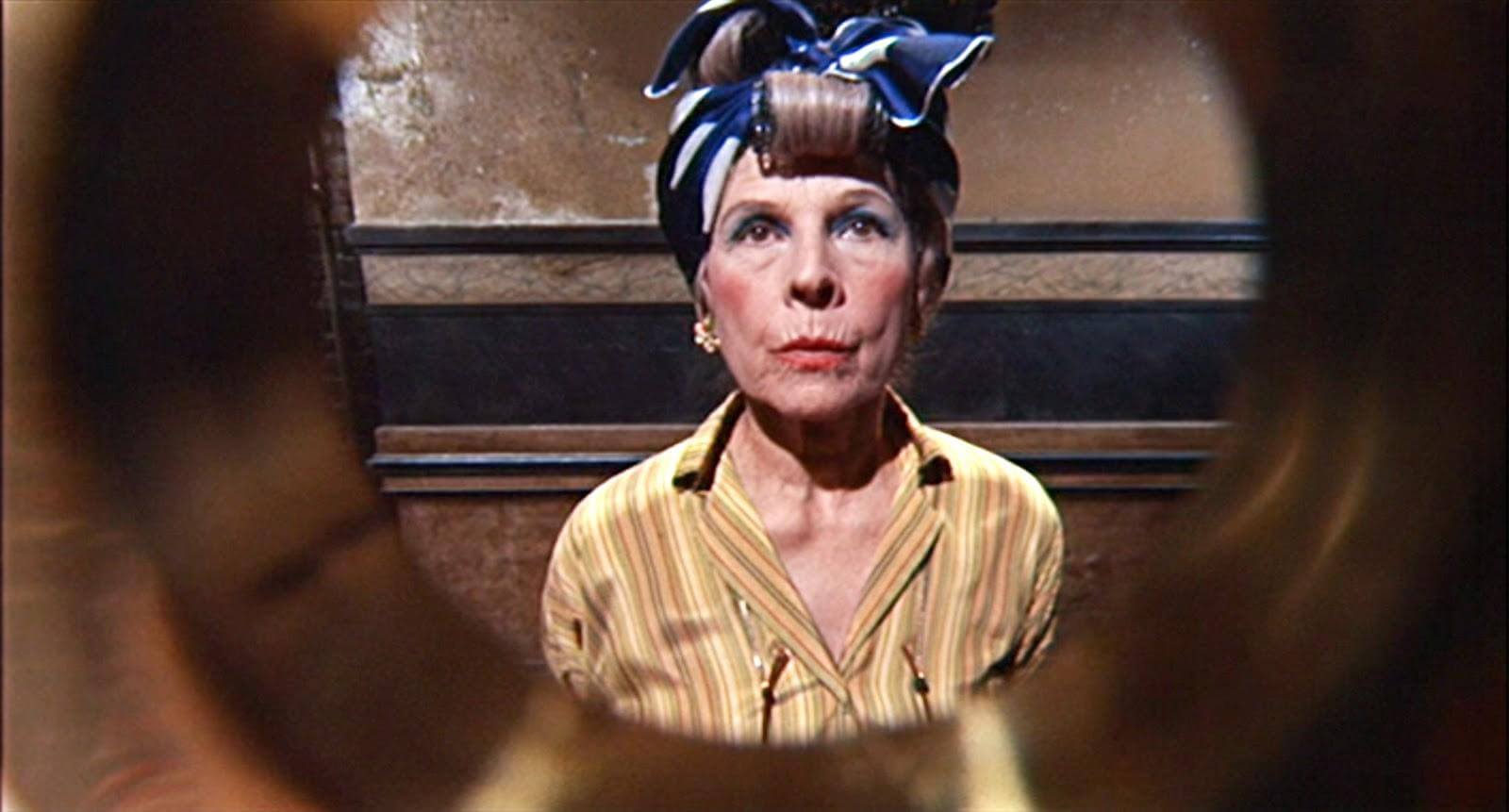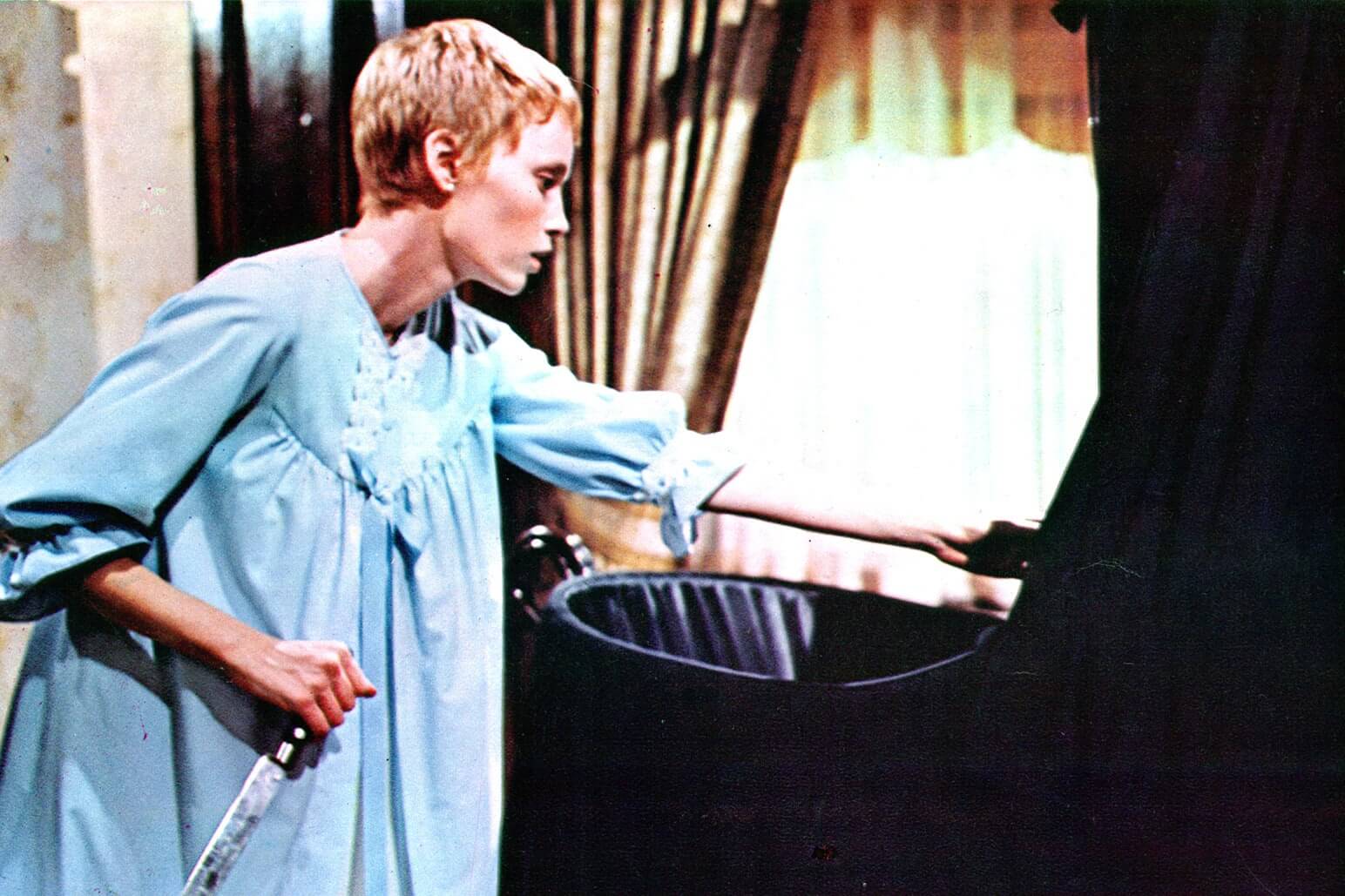ROSEMARY’S BABY. Roman Polanski’s terror next door

Rosemary’s Baby, Roman Polanski’s first American film, not only opened the doors of Hollywood for the Polish director but also became the first movie of a new subgenre in horror cinema known as satanic or occult horror.
Rosemary’s Baby remains the most outstanding example of this genre, finding worthy successors in works like William Friedkin’s The Exorcist, Richard Donner’s The Omen, or later films like Alan Parker’s Angel Heart. Roman Polanski, a 34-year-old director at the time, reached the peak of his talent, creating a film that captivates the viewer’s attention from the very first frames. According to Polanski himself, the movie starts like a soap opera, almost suggesting that it will be a family or drama film. Here, the happy marriage of Guy (John Cassavetes) and Rosemary (Mia Farrow) Woodhouse moves into a New York apartment building with a “history.” She doesn’t work, and he is a second-rate actor playing bit parts in theater and TV commercials. They are happy and in love. In short, it’s idyllic.

The building seems to be inhabited by a very pleasant group of slightly eccentric elderly people, including the Woodhouses’ neighbors, Minnie (Ruth Gordon) and Roman (Sidney Blackmer) Castevets, who, in a somewhat cheeky but charming way, establish close contact with the main characters. The idyllic atmosphere continues. However, Polanski doesn’t allow the viewer to remain in this mistaken impression for too long, introducing elements that disrupt the harmony of this seemingly perfect situation. A closet filled with strange-smelling herbs, a mysterious necklace, voices from behind the walls, and half-joking tales of the building’s rather uncanny history begin to make the viewer change their attitude, sensing more on a subconscious level than realizing that something is amiss. The idyllic mood is shattered by the suicide of a girl – a fellow tenant of the Castevets, whom Rosemary had met just a few days earlier in the shared laundry room.

As the viewer’s sense of dissonance between the image and their feelings deepens, the atmosphere of isolation surrounding the central character of the drama, Rosemary, also intensifies. This feeling is further amplified by the ascetic, detail-free frames, causing us to stop liking the initially cozy home of the main characters. Minute by minute, we begin to understand that the apartment where the Woodhouses moved in is becoming increasingly ominous, and the seemingly innocent attentions of the neighbors begin to resemble the behavior of a pack of wolves circling their prey.
The turning point is the lovemaking scene between Rosemary and Guy (or maybe not Guy), after which the heroine becomes pregnant. From this point on, it would seem that we already know everything, expecting a gruesome finale. Nothing could be further from the truth. Polanski misleads us until the very end, leaving us without answers as to whether the whole action is real or if it’s all a product of a woman’s hormone-induced delusion. From scene to scene, the atmosphere of isolation thickens until it becomes unbearable… until the birth of the child.

Polanski crafted an atmosphere that can only be boasted by extraordinary films. The claustrophobic atmosphere of the closed apartment and the irresistible feeling that Rosemary can only rely on herself are quite characteristic of Polanski’s work, who specializes in heavy atmospheres of isolation, to name just a few, such as Repulsion, The Tenant, or Excellent acting, especially by Mia Farrow and the Oscar-winning Ruth Gordon in the supporting role, further authenticates the plot. Mia Farrow’s character is delicate, ethereal, almost otherworldly, making the viewer genuinely concerned about her fate. At the same time, it leaves room for speculation about the influence of her environment on her behavior and her sanity. And that music, with Krzysztof Komeda’s famous lullaby, which bookends the first and last frames of the film, sending a genuine shiver of horror.

Rosemary’s Baby is an adaptation of Ira Levin’s bestselling novel of the same title, adapted for the screen by Polanski himself. Both the book and the film created a storm in the film and publishing world in their time, not only around the themes they explored but also the creators themselves. While the literary source seemed to be dressed in the trappings of a social satire thriller about the American middle class, the film based on it became a pinnacle of the horror genre.
Rosemary’s Baby became the first representative of a subgenre that was a kind of combination of gothic horror and psychological film, giving birth to what is now known as the satanic horror genre. Another stimulus that captured the imagination of viewers at that time was the fact that the Church of Satan, led by the late Anton Szandor LaVey, was experiencing a peak in popularity in the late 1960s. There’s an unsubstantiated rumor that LaVey was supposed to make a cameo appearance in Rosemary’s Baby, specifically in a dream sequence involving Rosemary and Guy.

Roman Polanski, who had Repulsion and The Fearless Vampire Killers to his name at the time, was considered a horror film specialist and many even accused him of being affiliated with the Church of Satan. To demonstrate the hysteria the film caused in the United States, it’s worth mentioning that many viewers swore they saw the eyes of Rosemary’s baby in the famous final scene, even though Polanski never actually showed the child’s eyes. In the film itself, observant viewers will find many details that provide additional room for the viewer’s imagination. The Woodhouses’ neighbor, who is also a leading negative character in the film, is named Roman (just like Polanski). The neighbors of the main characters are named Castevet, and John Cassavetes, who plays Rosemary’s husband, has a name quite similar to the famous filmmaker.
In the film, you can also spot wink-wink nods to the audience, such as the self-referential scene of moving the wardrobe blocking the entrance to the closet, which is a reference to Polanski’s excellent and award-winning short film from 1958 titled Two Men and a Wardrobe.
Rosemary’s Baby is an outstanding work not only because it initiated a new trend in cinema and elevated a genre that had been overshadowed and underestimated by critics for many years. Polanski’s film is, above all, excellent horror cinema that awakens our fear of the unknown, which can lurk just around the corner or… next door, among our neighbors.

